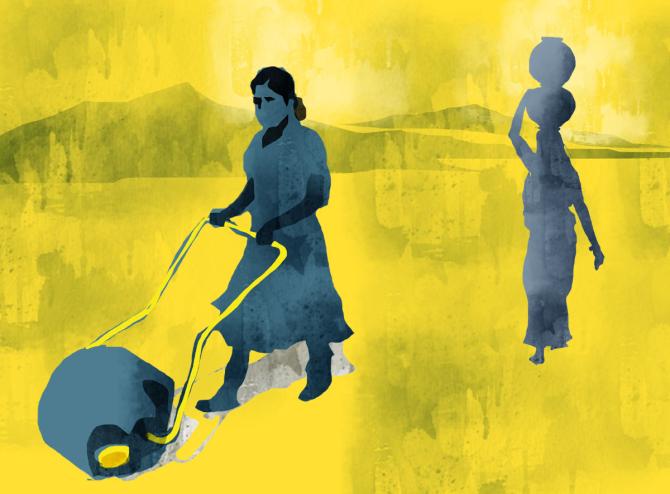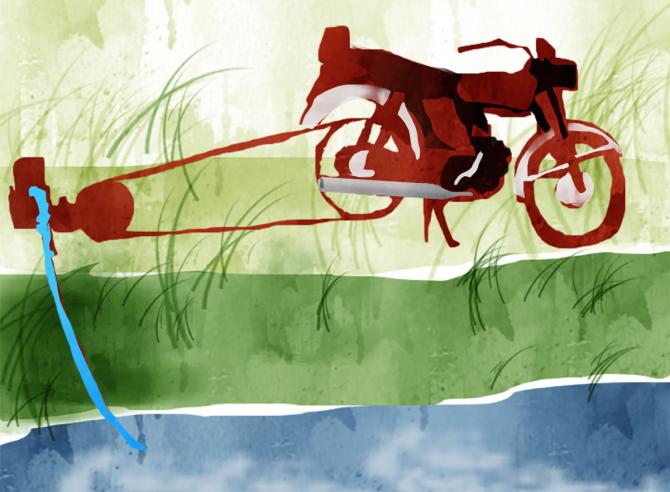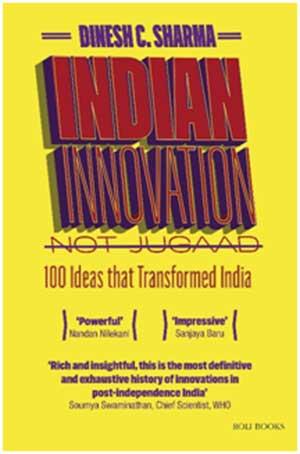What is Lingayata?
A Brief Look Into the
Evolution of a Term Favoured by Media But Grasped by Few
The current day ‘Lingayatism’ has a past that
is rich in literary output and unique in its philosophical teachings.
Shivanand Kanavi
https://thewire.in/history/lingayata-karnataka-vachanas-sharanas
A portrait of Basavanna (1105-1167 CE) by artist Vishakha Kanavi.
A prolific efflorescence
of Bhakti literature emerged in the form of vachana – short poetic prose or free verse poetry – in simple Kannada in the 12th century, in North Karnataka. To
this day about 12,000 vachanas of this period authored by over a hundred spiritual
seekers and saints, including over 30 women have been discovered. These poet
saints called themselves ‘Sharanas’. They hailed from almost all classes of society, professions,
and castes – including outcastes or “untouchables”.
They declared that they are a new community to which all those who
believed and practiced certain foundational tenets could join on initiation.
These tenets included:
1) Equality and mutual respect of all Sharanas no matter what their past
caste or community.
2) Equality among seekers, the Sharanas, without any gender
discrimination.
3) Form of worship was personal and private to a symbol they called
‘Ishta Linga’. It was primarily meditative and yogic. The Ishta Linga could be
carried on your body like a pendant and worshipped anywhere. Hence the name
Lingayata — one who worships his personal Ishta Linga.
4) They considered all forms of labour and means of livelihood (‘kayaka’) a form of worship, provided the honest earnings
from labour (kayaka) are primarily used for social redistribution, called ‘dasoha’.
5) They stressed the importance of being a compassionate and socially
productive human being in this world and in this life. They ignored the other
worlds of heaven and hell, as well as theories of rebirth.
6) By asserting the importance of socially productive and honest labour
as a form of worship to attain spiritual enlightenment, Sharanas also ignored
renunciation and ascetic ‘sanyasa’ as the dominant and preferred path to
enlightenment, as preached by the existing forms of Vedic, Agamic, Buddhist,
Jain, and other traditions. Thereby they showed a path to spiritual
enlightenment for all ordinary householders, farmers, traders, artisans and all
working men and women.
7) They insisted on eating together among Sharanas defying the taboos
imposed by caste discrimination, as they were all spiritually equal.
They lucidly expressed their views in the people’s language of the
region, Kannada, on their spiritual pursuit. They primarily conceived their god
as personal and formless. They also critically and incisively commented
profusely on prevalent precepts and practices such as: meaningless Vedic and
Agamic rituals, animal sacrifices during such rituals, and intermediation of
priests in any form of worship. They also opposed rituals associated with
animism and polytheism. They rejected temple-based worship dominated by priests
and rituals.
They opposed discrimination against women in the spiritual field. They
broke the Brahminical taboos which regarded women as inferior and unfit for
spiritual self-realisation, because of their natural biological functions of
menstruation and child birth.
Critics
of ritual
The Sharanas – also called ‘Vachanakaras‘ – not only ridiculed the Karma Kanda or Vedic and
Agamic rituals of yajna, homa, havana, animal sacrifice and elaborate temple worship,
but they also confronted all those Vedantins and Advaitins who merely spoke of
the abstract high falutin ideas of atma-brahma but blatantly practised caste and gender
discrimination. Vachanakaras frequently called such hypocrites as ‘vag–advaitins (‘advaitins only in words’).’
Among the Vachanakaras of 12th century,
those that stand out with their incisive commentary are Basavanna (1105–1167)
and his contemporaries, Allama Prabhu and Akka Mahadevi. Many other Sharanas,
over a hundred, also contributed to creating the new ethos and the new
community’s norms as well as its metaphysics.
What they advocated in words as well as
deeds was spiritually liberating and attracted a large number of working people
of all castes including ‘untouchables’, artisans, farmers, traders, and some
enlightened Brahmins as well.
The popularity of the leading Vachanakaras
led the poets in the region to write hagiographies of Sharanas in the Puranic
style. These hagiographic works were still set in the Puranic and old Shaivite
tradition and not the new radical ideas and practices of Vachanakaras.
In the 13th century notable works in this regard are Palkurike Somanatha’s Basava
Puranamu in Telugu and the
great Kannada poet Harihara’s works (in the form of ragale poems) regarding Basava, Allama, Akka
Mahadevi, and many other Sharanas. The Kannada version of Basava Purana
inspired by the Telugu Basava Puranamu was written by Bhima Kavi in the 14th
century.
There was growing popularity and numbers in
this new community whose membership was open and inclusive. Unlike other sects
of Hinduism, even today one can become a Lingayat through initiation, despite
being born into another religion. Soon it led to royal patronage in some Deccan
kingdoms like Vijayanagara, particularly during the reign of Devaraya II (reign
1422–46 CE).
Later important royal dynasties in Karnataka
became followers of Lingayatism. It is important to note that these kings and
queens considered their faith a personal matter and were equally patronising
all religions in their statecraft as was prevalent practice.
For example, the Nayakas of Ikkeri or
Keladi who ruled vast regions of present-day Karnataka and outside (1490–1763);
Haleri dynasty in the kingdom of Kodagu (1633–1834) and many other smaller
kingdoms. One of the most remembered is the Lingayat queen Rani Chennamma of
Kittur (1778–1829), known for her inspiring role in the anti-colonial struggle
against the British.
Teachings and literature
Lingayatism attained the features of an
established sect with elite patronage and Lingayat literature, which also came
to be known at that time as Veerashaiva literature, flourished from the 15th
century onwards.
The Vachana and Sharana teachings
resurfaced in the form of several compilations and at least four commentaries
known as Shunyasampadane (attainment
of the void or path to enlightenment). The declarative or dialogic form of many
vachanas lent themselves to be cast as part of a spiritual dialogue or a discussion
in a peer group. Such a forum of peers was not directly mentioned by Basava or
Allama in their vachanas but it was later imagined as a spiritual forum called
Anubhava Mantapa (hall of spiritual experience).
Vachanas were not written either by academic philosophers or for such
philosophers, but for ordinary people in their mother tongue, Kannada. Neither
were vachanas written as canonical texts or foundational sutras for a new darshana or a philosophical school like Sankhya, Yoga,
Nyaya, Vaiseshika, Purva Mimamsa, Vedanta, etc.
Vachanas were utterings of mystics based on
their spiritual experiences and reflection. While some common tenets, concepts,
and approaches can be distilled from the Vachanakaras, one also finds great
individuality and diverse approaches among them in search of spiritual
enlightenment as opposed to a monolithic philosophical system.
It should be noted that Sharanas were
respectful towards Tamil Shaiva saints of an earlier period, known as Nayanars,
(6th-8th Century
CE) and called them the ‘63 Puratanaru’ (sixty-three ancients). However,
what the Lingayat Vachanakaras did was construct their own radically new
community.
The Vachana form continued to be popular
among post-Basava mystics till the 18th century, so much so that we have
another 10,000 or more Vachanas written in the later period (15th to 18th
century).
The complete Vachana literature edited and published today by the Kannada
Pustaka Pradhikara under the general editorship of the late M.M. Kalburgi by
the government of Karnataka in two volumes has over 20,000 vachanas. The
process of collecting manuscripts, authenticating them, producing critical
editions, weeding out spurious ones etc. started in the 1890s and is now more
or less complete.
A selection of 2,500 vachanas edited by
Kalburgi for Basava Samiti have now been translated, and published under the
leadership of Aravind Jatti, into over 20 languages including English, French,
Mandarin, Arabic, Angika, Kashmiri, Dogri, Santhali, Bodo, Assami, Odiya,
Hindi, Marathi, Telugu, Tamil, Malayalam, Urdu, Bengali and so on. More,
including Persian, Spanish, Bajjika and so on are in the works.
In the century-long effort in this direction many institutions like
Karnatak University, Dharwad; Basava Samiti, Bengaluru and several Lingayat mathas have given institutional support. Many
scholars have contributed to editing and interpreting the meaning and intent of
Vachanas. To name a few: F.G. Halakatti, C. Uttangi, S.S. Basavnal,
Siddheshwara Swamiji, S.C. Nandimath, R.C. Hiremath, S.S. Bhusnurmath, M.M.
Kalburgi, L. Basavaraju, H. Tipperudraswamy, M. Chidananda Murthy, V.B. Rajur,
N.G. Mahadevappa, A.K. Ramanujan, H.S. Shiva Prakash, D.R. Nagaraj and O.L.
Nagabhushana Swamy.
Today, almost all the Vachanas are available on the internet in a
searchable database called Vachana Sanchaya due to the efforts of a team led by
O.L. Nagabhushana Swamy (https://vachana.sanchaya.net/
).
Similarly about 1500 vachanas of Basavanna in Kannada as well as their
translation into multiple languages are available at http://vachana.taralabalu.in/vachana.php?poet=137
of the Sirigere Taralabalu Matha.
Vachanas are commonly recited and sung in
the villages and towns of Karnataka both in religious and secular functions.
Prominent musicians like Pt Mallikarjun Mansur, Pt Basavraj Rajguru, Pt
Siddharam Jambaldinni, Pt Venkatesh Kumar and others popularized the singing of
vachanas in their classical Hindusthani concerts as well as in Radio, TV and
modern music industry in the past nearly a hundred years.
The social, political, and economic circumstances which led to this
efflorescence in the 12th century and the 900-year trajectory of this community
are still being explored. A significant modern contributor to this
multidisciplinary exploration is historian Manu V. Devadevan.
Two forms
By the 15th century, the popular inclusive
community of spiritual democracy initiated by Basava and other Sharanas started
taking the form of a ‘faith that one is born into’ rather than voluntarily
initiated into. Concomitantly high priests emerged to interpret the faith and
carry out new rituals along with a large mass of followers of the faith. As
traders, landowners, sections of contemporary elite, including some royal
families, started joining the faith, there was a move to achieve formal
‘respectability’.
Historically it took two forms. One was to pay obeisance to Basava and
Allama but move away from their radical and experiential approach and instead
evolve a formal metaphysics and a spiritual path called “shat sthala”
(six stage path) which can be cast in a familiar tradition. This attempt then
associated Lingayatism to some form of Advaita. Shakti Vishisht Advaita, Shiva
Yoga etc were such new formal labels.
The other attempt by Agamic Shaivism to
claim Lingayat as part of old Brahminical Shaivism. This trend headed by so
called “pancha acharyas” denied the role of 12th-century Sharanas as founders
of Lingayatism, including their radical new ideas and practices.
In the medieval period the community also
started calling itself Veerashaiva along with Lingayat as synonyms. This was
contrary to the fact that all forms of Shaivism worshipped a Puranic,
anthropomorphic Shiva as their deity, believed to be the resident of the
mythical Kailasa, etc. Whereas, the Sharanas of 12th century did not
recognise the Puranic Shiva as their deity. Nor did they recognise the
associated temples and pilgrim centres like Jyotir Lingas and so on. Though the
Sharanas called their deity Shiva, it was a formless Para Shiva. They
identified it with void, space, Bayalu, an omnipresent element that is a part
of every human being and not residing only in idols and temples, Shunya – not
to be confused with the Buddhist Shunyavad – and so on.
It is also to be noted that from 16th to
19th Century
several Lingayat seers interacted with an open mind with Muslim Sufis and
saints in the Deccan. As a result, Lingayat Mathas of Savalgi Shivalingeshwara,
Shirahatti Fakeer Swamy, Kodekal Basavanna, and others, even today have a large
following among both Lingayats and Muslims and both communities participate
actively in the annual jatras and Rath Utsavs.
A significant point to note is that in the 1980s and early ‘90s hardly any
Lingayat seer among the hundreds of prominent ones, joined the Vishwa Hindu
Parishad or supported the Ram Janmabhoomi movement.
The present
There are two major trends in the present
day Lingayat community. One is to go to the spiritual roots of the community in
the radical teachings of 12th-century Sharanas and Vachanakaras. Many in this segment
also believe that Lingayatism should not be identified with Vedic or Agamic
Hinduism but a separate way of life and religion, like Sikhism. They base their
argument on the radical precepts of the vachanas of Sharanas of the 12th
century as well as many practices of the community which are very different
from traditional Hindus. For example, all Lingayats bury their dead, as against
cremation among Hindus and so on. It is not known when this practice started.
Lingayat burial rituals however are different from Islamic and Christian burial
rituals.
Late M M Kalburgi, who was a prominent
academic and researcher of Lingayatism and Kannada culture and literature,
strongly advocated the recognition of Lingayatism as a separate religion and
not as a part of Hinduism. He was backed by many Lingayat seers and
intellectuals. There were several large mass rallies held in different parts of
Karnataka, Maharashtra, and Delhi during 2017-18 demanding recognition from the
Union government of Lingayat as separate religion, like Sikhism.
The other trend in the Veerashaiva community pays formal obeisance to Basava
and other Sharanas but basically adopts various practices of older Shaivism
including temple worship. It recognises a priestly class (called Aiyanavaru or
Jangamas) among Lingayats to perform rituals. This segment also practises caste
discrimination and endogamy within sub groups of Lingayats (based on their
former professions) like Jangama, Banajiga, Panchamasali, Sada, Ganiga etc.
They also do not object to being part of traditional Hinduism.
Today Lingayats constitute an influential
community in Karnataka and exist in significant numbers in Maharashtra,
Telangana, and in smaller numbers in Tamil Nadu and Kerala. They are found in
all professions and classes.
More than 300 Lingayat mathas (monasteries)
have been documented by researchers. Mathas are local and a few of them have a
couple of branches. All of them are independent and autonomous with no
centralized structure. They are local community institutions supported by land
grants from devotees. Some are centuries old and many are more recent. Many
mathas have grants from devotees of different castes, communities, and
religions. The properties of the mathas are managed by a committee appointed by
the devotees in the form of a trust. The committee then invites seers trained
in the theory and practice of Lingayatism to provide the local community both
moral and religious leadership. Swamijis in these mathas also act as social and
moral counsellors and are often approached by devotees to arbitrate in many
familial or property disputes. When any Swamiji does not fulfill his role as
moral and religious leader in the community there have been cases of removal of
a swamiji from a matha by the devotees on grounds of moral turpitude and a new
Swamiji installed.
Lingayats were able to access modern education under British colonialism due to
the efforts of many intellectuals, businessmen and landowners in the community
who started several schools and colleges. Significantly, Lingayat swamijis
and mathas played a major role in the spread of modern education since the
beginning of the 20th century. Many mathas all over Karnataka made special
efforts to provide free boarding and lodging for poor students in their Prasada
Nilayas without discriminating on the basis of caste and continue to do so.
Thus for over a century, lakhs of poor students could get modern school and
college education.
These efforts have led to the presence of
Lingayats in very large numbers not only in the traditional professions of
farmers, traders, and artisans but also in modern professions such as medicine,
law, engineering, academia, and administration. Today, with their large
presence in the economy and academia, they play a significant role in
Karnataka’s political, cultural, and social life.
Shivanand Kanavi is a theoretical
physicist, business journalist, author, former Vice-President of TCS, and is
currently Adjunct Faculty at NIAS, Bengaluru. Can be reached at
skanavi@gmail.com.
The above is excerpted from a contribution
by Shivanand Kanavi to “Indians: Civilization and
Histories”, edited by G.N. Devy, Tony Joseph, and Ravi
Korisettar, published by the Aleph Book Company.







